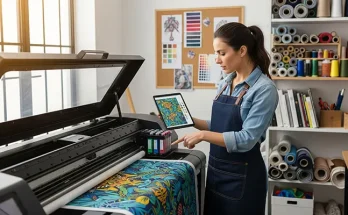Textile design is a creative field that combines artistry and technical skills to create innovative and visually appealing fabrics. From fashion to interior design, advanced textile design techniques and skills play a crucial role in pushing the boundaries of what is possible in the world of textiles. Here are some advanced techniques and skills that are shaping the future of textile design:
1. Digital Printing
Digital printing has revolutionized the textile industry, allowing for highly detailed and intricate designs to be printed directly onto fabrics. This technique offers endless possibilities in terms of color, pattern, and texture. Designers can now experiment with complex motifs, gradients, and photorealistic prints, bringing their visions to life with stunning precision and accuracy.
2. 3D Textile Design
Advancements in technology have enabled the creation of three-dimensional textiles. Designers can now explore various techniques such as pleating, embossing, laser cutting, and heat manipulation to add depth and structure to fabrics. These innovative textures not only create visual interest but also enhance the tactile experience of the textiles.
3. Smart Textiles
With the rise of the Internet of Things (IoT), textile designers are incorporating electronic components into fabrics to create smart textiles. These cutting-edge textiles can respond to environmental changes, monitor vital signs, and even incorporate interactive features. Advanced skills in electronics, programming, and engineering are required to blend technology seamlessly with fabric, resulting in functional and futuristic textile designs.
4. Sustainable Design Practices
In recent years, there has been a growing demand for sustainable textile design practices. Advanced skills in eco-friendly dyeing techniques, such as natural dyeing and low-impact dyeing, are becoming increasingly important. Designers are also exploring innovative material alternatives, such as recycled fibers and bio-based materials, to reduce the environmental impact of textile production.
5. Collaborative Design Processes
Collaboration is key in advancing textile design techniques. Designers are now collaborating with engineers, scientists, and other experts to experiment with new materials, technologies, and processes. By combining their diverse skills and knowledge, these collaborative efforts push the boundaries of traditional textile design, resulting in groundbreaking innovations.
6. Sustainability in Design Thinking
Beyond sustainable materials and techniques, advanced textile design skills also involve incorporating sustainability into the very core of the design process. Designers are exploring concepts such as circular design and upcycling, aiming to create textiles that are not only visually appealing but also environmentally conscious from conception to end of life.
Advanced textile design techniques and skills are driving innovation in the field, allowing designers to create fabrics that were previously unimaginable. From digital printing to 3D textile design, smart textiles to sustainable practices, the future of textile design is full of exciting possibilities. By embracing these advanced techniques and skills, textile designers can not only create visually stunning fabrics but also contribute to a more sustainable and technologically integrated future.





